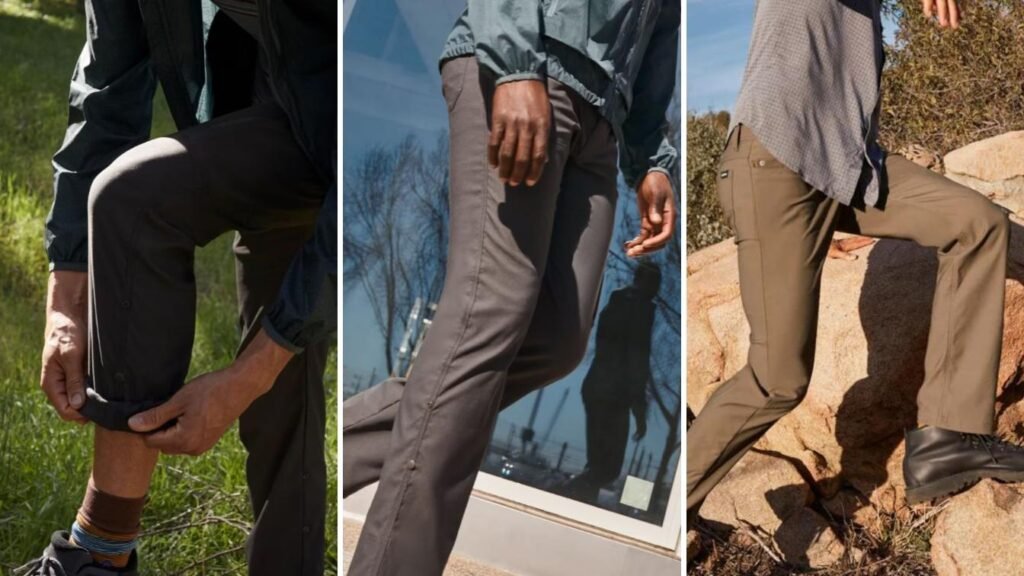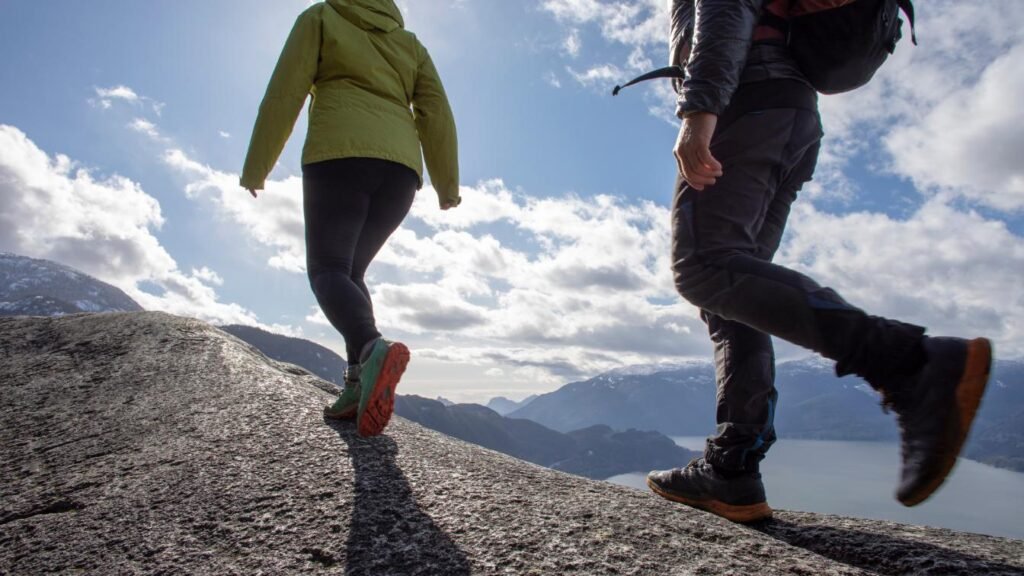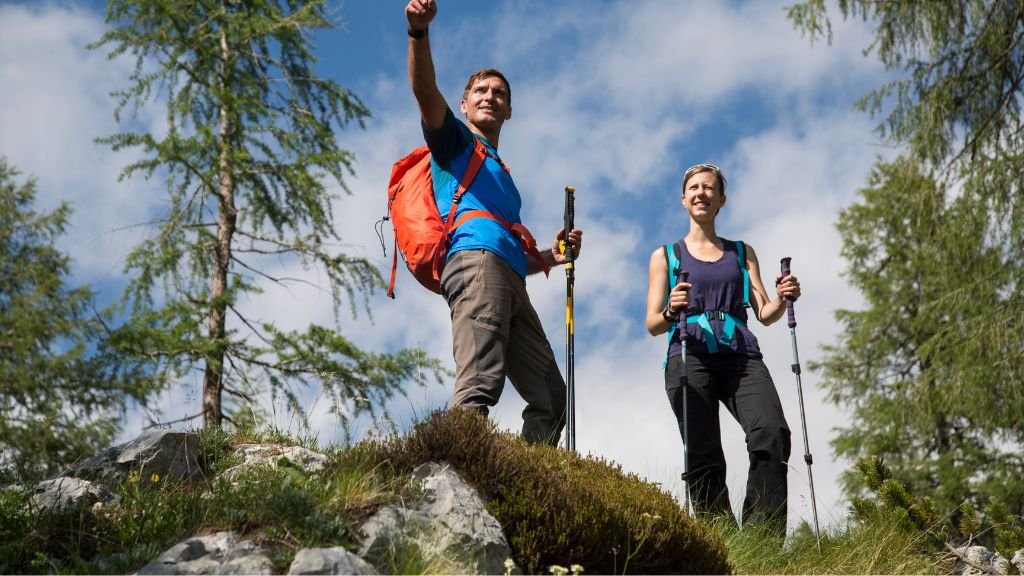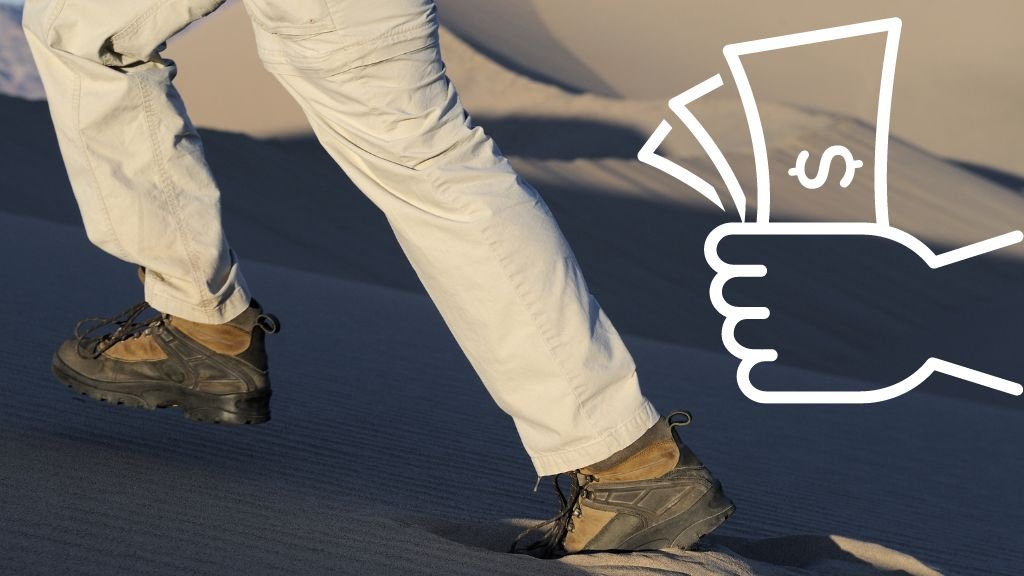Gym pants are usually a good choice for hiking but it largely depends on their type and the nature of your hike. Some gym pants can handle a light stroll in the woods, but tougher trails call for more specialized gear.
We’ll go into the pros and cons of using this type of pants for hiking, helping you make an informed decision next time you’re packing your backpack.
Gym Pants Types for Hiking
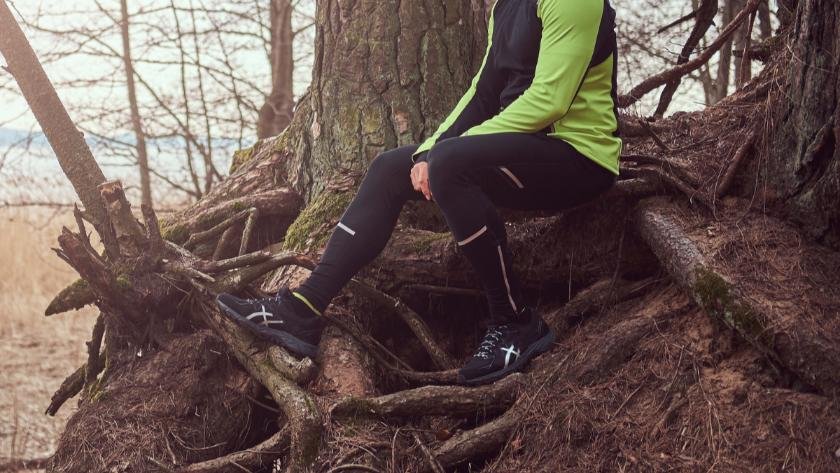
Each gym pants type has its own unique features that can make your hiking experience more comfortable and enjoyable. Let’s take a closer look at these different types.
- Compression Pants: These are like a second skin. They’re tight-fitting and designed to support your muscles during physical activity. They’re good for those early morning hikes when the air’s still a bit chilly.
- Joggers: These are loose and comfortable, making them ideal for a leisurely hike on a sunny day. They usually come with pockets – a handy place for your trail mix.
- Leggings: They are similar to compression pants but offer more flexibility. They’re breathable and lightweight, so they’re better for long, strenuous hikes.
Gym Pants Characteristics
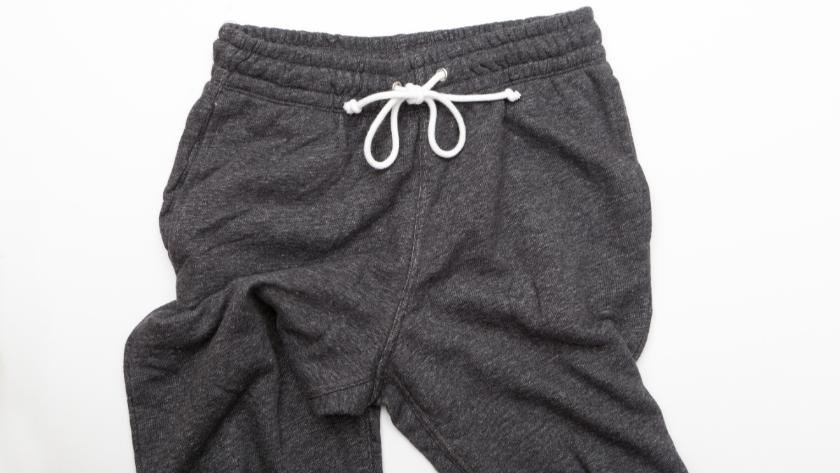
These seemingly simple pieces of clothing are more complex than you might imagine. They’re engineered with precision, designed to support and enhance your workout experience. Let’s break it down.
Material Composition
First off, we’ve got the material composition. You may have noticed that gym pants don’t feel like your everyday cotton trousers. That’s because they’re typically made from fabrics like polyester, nylon, or a blend of both.
These materials are known for their breathability and moisture-wicking properties. When you’re sweating it out in the gym, these pants work overtime to keep you dry and comfortable – your personal tiny air-conditioner.
Design Features
Ever tried doing a squat in jeans? Not fun! That’s why gym pants are designed to be flexible and stretchable, allowing you to move freely without any restrictions.
They come equipped with handy features like waistbands that sit comfortably on your hips, pockets for storing essentials, and other design elements that make them practical yet stylish.
Durability and Wear-Resistance
I’m sure you’ve noticed how your gym pants can withstand intense workouts and countless wash cycles without losing their shape or color. That’s because they’re built to be durable and wear-resistant.
In fact, when compared to specialized hiking pants, gym pants might not offer the same level of protection against the elements, but they definitely hold their own in terms of longevity and resilience.
Gym pants can be a suitable choice for hiking, given their comfort, flexibility, and durability. But always consider the specific requirements of your hike such as the weather conditions and the terrain before making your final decision.
Pros and Cons of Using Gym Pants for Hiking
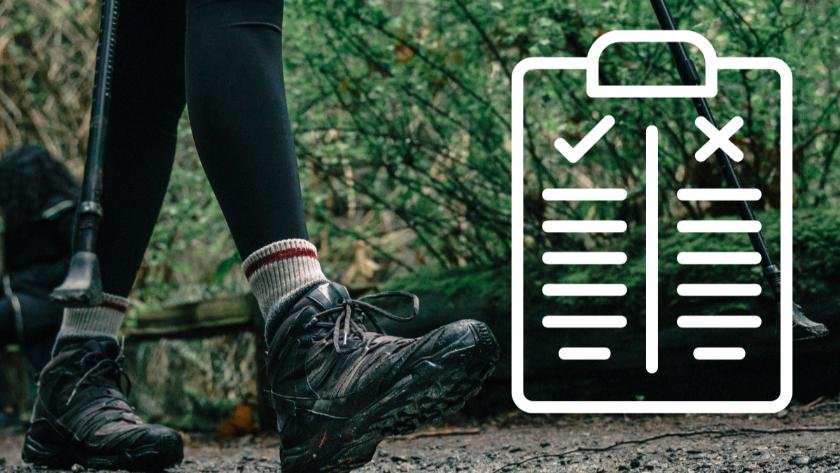
Gym pants do have a place in the world of hiking, but there are some potential pitfalls to keep in mind, along with the perks.
Pros
- Comfort: Gym pants are typically made from stretchy, comfortable materials that allow for a full range of movement which is beneficial when hiking over uneven terrain.
- Breathability: Many gym pants are designed to wick sweat away from the body, keeping you dry and comfortable during intense physical activity.
- Lightweight: Gym pants are often lighter than traditional hiking pants, which can make your backpack lighter if you’re packing an extra pair.
- Versatility: Gym pants can be worn for many different types of exercise, not just hiking, making them a versatile addition to any workout wardrobe.
Cons
- Durability: Gym pants may not be as durable as hiking-specific pants. They might rip or tear when coming into contact with rough surfaces such as rocks or branches.
- Weather Resistance: Gym pants typically lack the water- and wind-resistant properties of hiking pants, which can be a disadvantage in inclement weather.
- Lack of Pockets: Many gym pants do not have pockets, or have very small ones, which can be a drawback when you need to carry essential items while hiking.
- Insulation: They do not provide the same level of insulation as hiking pants, which is a problem in colder climates or at higher elevations.
Gym Pants vs. Specialized Hiking Pants
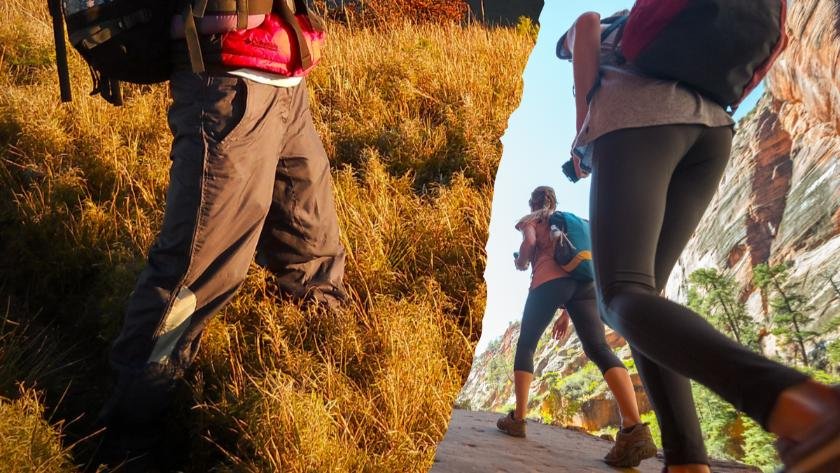
Material
Gym pants and specialized hiking pants are made of different materials. Your typical gym pants – usually made of cotton or polyester – are designed for indoor use. They’re light, they’re breathable, and they’re comfortable for a treadmill run or a weightlifting session.
Specialized hiking pants are built for the outdoors. They’re often made of durable materials like nylon or spandex, which are resistant to tears and abrasions. These fabrics have a little magic trick – they can repel water and dry quickly if you get caught in a downpour or have to wade through a stream.
Design and Feature Variances
Gym pants tend to be fairly straightforward – elastic waist, slim fit, maybe a pocket or two.
But hiking pants? They come packed with features like zip-off legs that convert into shorts, articulated knees for better mobility, and an array of pockets for carrying essential items. Some even offer UPF protection to shield you from harmful UV rays.
Suitability for Various Hiking Scenarios
To put it simply, gym pants are great for the gym. They’ll keep you comfortable during your workout and they’re easy to move in. But when you’re out on the trail, facing unpredictable weather and terrain, those gym pants might be not enough.
The best hiking pants, with their durable materials and outdoor-friendly features, are designed to handle whatever comes their way. You can be trekking through a dense forest, climbing a rugged mountain, or hiking through a rocky trail, and these pants will be still very reliable.
When to Use Gym Pants for Hiking?
Using gym pants for hiking can be effective, but only under certain circumstances. What are some scenarios when they may come in handy?
- Short, Easy Trails: If you’re planning a quick hike on a well-maintained trail, gym pants can do the job just fine. They’re comfy and flexible, perfect for a casual stroll in nature.
- Indoor Climbing: Heading to an indoor rock climbing gym? Go ahead and wear your gym pants. These environments are controlled and don’t require the extra features of hiking pants.
- Warm Weather: On hot summer days when you’re sure it won’t rain, gym pants can provide the breathability and comfort you need.
- Fitness-Focused Hikes: If you’re hitting the trail mainly for a workout and not so much for the wilderness experience, your gym pants are up to the task.
When to Use Hiking Pants?
You might think your comfy gym pants are enough for a quick hike, but for those more demanding treks, hiking pants are invaluable. Here’re some scenarios when you’ll need them.
- Long, Difficult Treks: For those long hikes on rough terrain, you’ll want the durability and protective features of hiking pants.
- Unpredictable Weather: Hiking pants are designed to withstand varying weather conditions. They dry quickly and often have a water-resistant finish.
- Cold or Windy Conditions: Many hiking pants offer wind resistance and some are lined for extra warmth, making them a smart choice for chilly or windy days.
- Outdoor Climbing: Scaling an outdoor cliff or boulder? Hiking pants offer the durability and flexibility you need.
- Protection from the Elements: Hiking pants are generally more rugged and provide better protection against sun, insects, and prickly vegetation.
Can I Wear Jogger Pants for Hiking?
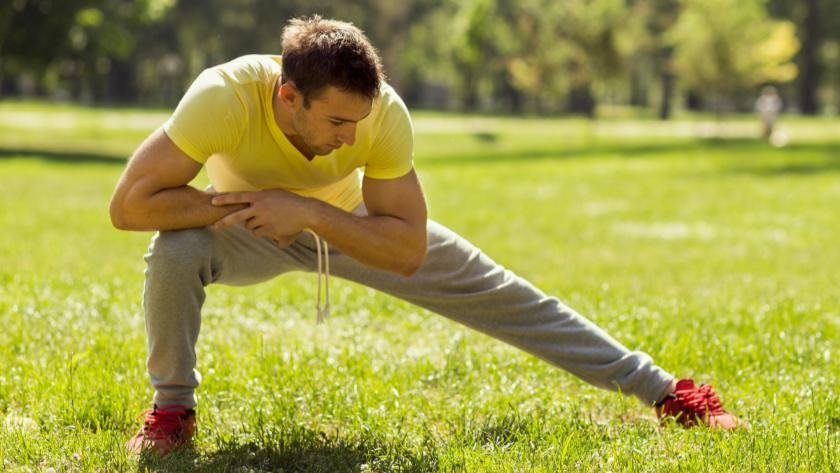
Yes, you can wear jogger pants for hiking. With their snug fit and flexible material, they offer comfort and mobility which is important on a hiking trail. If you move through uneven terrains, climbing over rocks, or jumping across streams, you need pants that moves with you, not against you and that’s what jogger pants do. They are designed for physical activities, after all.
But like any other piece of equipment, they have their limitations. They may not provide the same level of protection against harsh weather conditions as specialized hiking pants would. Or, they might lack the convenient pockets that I always appreciate for easy access to my essentials.
While jogger pants can be a decent option for hiking, it really depends on the situation. If I’m out for a casual stroll in a well-maintained park, my joggers are my go-to. But for those challenging multi-day treks in unpredictable weather, I’d rather stick to my trusty hiking pants.
Are Running Pants Good for Hiking?
Running pants can serve you well on a hike. They share many similarities with joggers, such as offering comfort and flexibility, which are key when you’re out on the trail.
But there’s a distinct difference between the two. While joggers tend to be more loose-fitting and relaxed, running pants usually boast a tighter fit, designed to reduce air resistance while running. This snug fit could potentially limit your range of motion during a hike, especially during those awkward scrambles over large rocks or steep inclines.
For me, running pants don’t offer enough protection needed against harsh weather conditions or rough terrains. You might also find them lacking in features commonly found in hiking pants, like reinforced knees or ample pocket space.
Conclusion
While gym pants can certainly work in a pinch, a good pair of hiking pants is a sound investment for any serious hiker. They’re specifically designed to withstand the rigors of the trail and often come with handy features like reinforced knees and plenty of pockets.
But if comfort is your top priority and you’re sticking to well-trodden paths, then those gym pants might be enough for you.


